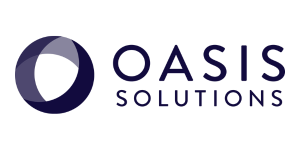When considering an ERP solution, there are a number of options that need to be weighed, like which solution is right for your organization, how many users you will need, what functionality you will have implemented, and more. However, with the increasing capacity and security of cloud computing, you now have another choice to consider: How you are going to deploy your ERP solution – whether you will maintain your own data on your own servers or if you will have it hosted in the cloud.
Cloud Computing: Cloud ERP is a hosted service delivered over the Internet. SaaS (Software as a Service) ERP systems reside in the cloud. The cloud provides the computing power to run the solution.
On-Premise: On-premise software is installed and runs on computers on the premise (in the building) of the person or organization using the software.
Advantages of Cloud Computing:
Since cloud systems are hosted elsewhere, they relieve some of the pressures that come with choosing an on-premises system. You won't have to perform maintenance on the server. The cloud provider performs this task, and backs up your data in the system. When equipment needs to be replaced, the provider replaces it.
Cloud systems may be less expensive, because you can purchase only the licensing, service space and infrastructure that you need. When your business needs change, it's easy to purchase more space.
Disadvantages of Cloud Computing:
When you house the system, you know that it's physically secure because you can control who accesses your building. With a cloud-based server, you don't know who has access to the building and therefore how safe your data really is. Security concerns are an area where on-premise systems offer more protection than cloud-based systems. Do you want to have someone else monitoring your business data, who maybe monitoring the security of many systems and therefore slow to respond to a security attack, or have your own in-house IT people monitor authorization attempts and system access?
Advantages of On-Premise:
On-premise enterprise resource planning software keeps your business data close to the source. You don't need to worry about data leaks, security threats, and other data security problems -- but you do need to assign IT staff to monitor these things. With in-house systems, the control is in your hands. If you have sensitive business data, this might make the most sense.
Disadvantages of On-Premise:
When you opt for on-premise ERP software, you may get additional help with training, setting up the system, and choosing modules from the consultant. In-house IT staff become responsible for maintenance on the server. Running an ERP system may consume their time and put other IT projects on the back burner. Additionally, up front costs with on-site systems are high, because you pay for all of the servers and infrastructure you might need.
Don’t forget hybrid options. “Cloud” and “SaaS" are often used interchangeably and many executives believe that there is a black and white decision between one or the other, but they often fail to realize that hybrid options are additional possibilities. Companies may want the flexibility and control of on-premise solutions, but they may also want to minimize their capital investment in their IT infrastructure. Many of these organizations are going down the path of purchasing traditional, on-premise software, but having it hosted in the cloud outside their four walls. These hybrid options are the fastest growing segment of our larger, more complex, multi-national clients, and a key driver of recent growth in the cloud segment.
At the end of the day, there is no one size fits all strategy for our clients and other organizations. Each strategy has pros, cons, trade-offs and risks, which all need to be examined in the context of your unique business needs and priorities.


